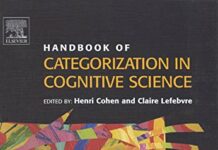
Ebook Info
- Published: 2007
- Number of pages: 673 pages
- Format: PDF
- File Size: 4.13 MB
- Authors: Henri Cohen
Description
The central theme of this book is the solution of Diophantine equations, i.e., equations or systems of polynomial equations which must be solved in integers, rational numbers or more generally in algebraic numbers. This theme, in particular, is the central motivation for the modern theory of arithmetic algebraic geometry. In this text, this is considered through three of its most basic aspects. The book contains more than 350 exercises and the text is largely self-contained. Much more sophisticated techniques have been brought to bear on the subject of Diophantine equations, and for this reason, the author has included five appendices on these techniques.
User’s Reviews
Editorial Reviews: Review From the reviews:“The book under review deals with Diophantine analysis from a number-theoretic point of view. … Each chapter ends with exercises, ranging from simple to quite challenging problems. The clarity of the exposition is the one we expect from the author of two highly successful books on computational number theory … and makes this volume a must-read for researchers in Diophantine analysis.” (Philosophy, Religion and Science Book Reviews, bookinspections.wordpress.com, October, 2013)“This is the first volume of a highly impressive two-volume textbook on Diophantine analysis. … Readers are presented with an almost overwhelming amount of material. This … text book is bound to become an important reference for students and researchers alike.” (C. Baxa, Monatshefte für Mathematik, Vol. 157 (2), June, 2009)”Cohen (Université Bordeaux I, France), an instant classic, uniquely bridges the gap between old-fashioned, naive treatments and the many modern books available that develop the tools just mentioned … . Summing Up: Recommended. … Upper-division undergraduates through faculty.” (D. V. Feldman, CHOICE, Vol. 45 (5), January, 2008)”Number Theory, is poised to fill the gap as a core text in number theory … . So, all in all, Henri Cohen’s … Number Theory are, to any mind, an amazing achievement. The coverage is thorough and generally all but encyclopedic, the exercises are good, some are excellent, some will keep even the best-prepared student busy for a long time, and the cultural level of the book … is very high.” (Michael Berg, MathDL, July, 2007)”The book under review deals with Diophantine analysis from a number-theoretic point of view. … The clarity of the exposition is the one we expect from the author of two highly successful books on computational number theory … and makes this volume a must-read for researchers in Diophantine analysis.” (Franz Lemmermeyer, Zentralblatt MATH, Vol. 1119 (21), 2007) From the Back Cover The central theme of this graduate-level number theory textbook is the solution of Diophantine equations, i.e., equations or systems of polynomial equations which must be solved in integers, rational numbers or more generally in algebraic numbers. This theme, in particular, is the central motivation for the modern theory of arithmetic algebraic geometry. In this text, this is considered through three aspects. The first is the local aspect: one can do analysis in p-adic fields, and here the author starts by looking at solutions in finite fields, then proceeds to lift these solutions to local solutions using Hensel lifting. The second is the global aspect: the use of number fields, and in particular of class groups and unit groups. This classical subject is here illustrated through a wide range of examples. The third aspect deals with specific classes of equations, and in particular the general and Diophantine study of elliptic curves, including 2 and 3-descent and the Heegner point method. These subjects form the first two parts, forming Volume I. The study of Bernoulli numbers, the gamma function, and zeta and L-functions, and of p-adic analogues is treated at length in the third part of the book, including many interesting and original applications. Much more sophisticated techniques have been brought to bear on the subject of Diophantine equations, and for this reason, the author has included five chapters on these techniques forming the fourth part, which together with the third part forms Volume II. These chapters were written by Yann Bugeaud, Guillaume Hanrot, Maurice Mignotte, Sylvain Duquesne, Samir Siksek, and the author, and contain material on the use of Galois representations, points on higher-genus curves, the superfermat equation, Mihailescu’s proof of Catalan’s Conjecture, and applications of linear forms in logarithms. The book contains 530 exercises of varying difficulty from immediate consequences of the main text to research problems, and contain many important additional results.
Reviews from Amazon users which were colected at the time this book was published on the website:
⭐
Keywords
Free Download Number Theory: Volume I: Tools and Diophantine Equations (Graduate Texts in Mathematics, 239) 2007th Edition in PDF format
Number Theory: Volume I: Tools and Diophantine Equations (Graduate Texts in Mathematics, 239) 2007th Edition PDF Free Download
Download Number Theory: Volume I: Tools and Diophantine Equations (Graduate Texts in Mathematics, 239) 2007th Edition 2007 PDF Free
Number Theory: Volume I: Tools and Diophantine Equations (Graduate Texts in Mathematics, 239) 2007th Edition 2007 PDF Free Download
Download Number Theory: Volume I: Tools and Diophantine Equations (Graduate Texts in Mathematics, 239) 2007th Edition PDF
Free Download Ebook Number Theory: Volume I: Tools and Diophantine Equations (Graduate Texts in Mathematics, 239) 2007th Edition



